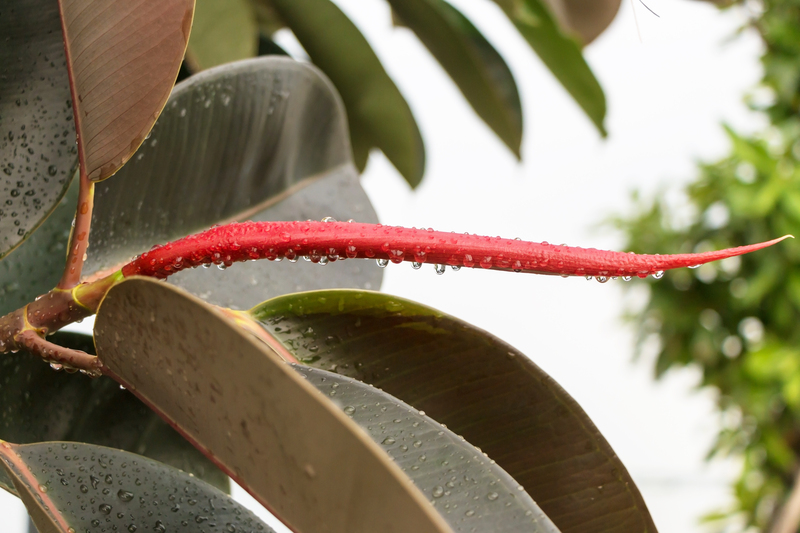How to Build Safe and Stimulating Garden Spaces
Posted on 06/09/2025
How to Build Safe and Stimulating Garden Spaces
Creating a safe and stimulating garden space is a rewarding project that offers countless benefits for individuals, families, and communities. Whether you are designing a garden for children, pets, or simply looking to create a beautiful, functional outdoor oasis, thoughtful planning is essential. In this comprehensive guide, we'll explore the best strategies to build secure and engaging garden environments that inspire relaxation, play, and connection with nature.

Why Safety and Stimulation Matter in the Garden
Garden safety ensures that everyone - from energetic toddlers to beloved pets and elderly family members - can enjoy the outdoors without risk. At the same time, a stimulating garden enriches the senses, supports local wildlife, and invites interaction, turning an ordinary yard into a vibrant, dynamic living space.
- Reduce injuries and hazards
- Encourage physical activity through exploration
- Support mental wellness by connecting with nature
- Promote learning about plants and ecosystems
- Enable social connections in an inviting outdoor setting
Assessing Your Garden Space
Before you start building, take time to evaluate your existing outdoor area. Thoughtful assessment helps identify potential risks and opportunities for improvement.
Identify Hazards
- Check for sharp edges on tools, fences, or structures
- Look for poisonous plants or allergen-producing species
- Assess for trip hazards such as uneven paths or loose stones
- Consider animal and insect risks (bees, wasps, etc.)
- Note areas with poor visibility or hidden spots
Understand Sun and Shade Patterns
Mapping sun exposure throughout the day allows you to place seating, play equipment, and plants wisely for comfort and plant health.
Test the Soil and Drainage
Healthy soil and efficient drainage reduce slips, muddy patches, and support strong, thriving plants.
Design Principles for Safe and Stimulating Gardens
Now that you've assessed your space, let's dive into core design principles for secure and engaging gardens. A well-designed garden balances aesthetics, safety, and sensory enrichment.
1. Safe Boundaries and Fencing
- Install secure fencing: Use sturdy, smooth materials and maintain proper heights based on the garden's users (children, pets, or wildlife).
- Create clear borders: Use low hedges, planters, or decorative stones to signal transitions between spaces.
2. Choose Non-Toxic and Suitable Plants
- Research plant safety: Avoid species hazardous to children and pets (such as foxglove, oleander, or yew).
- Select sensory plants: Choose varieties with interesting textures, fragrances, and colors--like lavender, lamb's ear, or sunflowers.
3. Pathways and Surfaces
- Non-slip surfaces: Use rubber mulch, decomposed granite, or textured pavers for safe walking.
- Well-lit pathways: Solar-powered or LED lighting keeps the garden accessible after dark.
- Smooth, level walking routes allow easy movement for everyone, including those with mobility challenges.
4. Accessible Design
- Raised beds and wheelchair-friendly paths ensure everyone can enjoy gardening.
- Wide, clear passageways: At least 90cm (35 inches) wide for comfortable access.
5. Safe Water Features
- Supervise access: Fencing or covers for ponds and water gardens prevent accidents.
- Choose shallow features: Bubbling fountains or birdbaths offer stimulation without risk.
6. Natural Play and Exploration Spaces
- Incorporate play equipment: Opt for non-toxic, sturdy materials with smooth edges.
- Natural elements: Logs, boulders, and sandpits inspire creativity and movement.
7. Provide Shelter and Shade
- Use pergolas, gazebos, or large umbrellas to create cool retreats.
- Plant shade trees for long-term comfort.
8. Ensure Visibility and Supervision
- Low hedges and clear sightlines help keep an eye on children or pets.
- Strategic seating allows supervision without sacrificing comfort.
Engaging All the Senses: Multi-Sensory Garden Ideas
Stimulating garden environments draw people in and encourage relaxation, learning, and fun--no matter their age. Here are ideas for creating a garden that nourishes all the senses:
- Sight: Vivid flowers, contrasting foliage, colorful pots and artwork.
- Smell: Aromatic plants like rosemary, thyme, jasmine, and mint.
- Touch: Soft grass, velvety lamb's ear, crunchy gravel, and smooth stones.
- Sound: Wind chimes, rustling bamboo, bird calls, or water features.
- Taste: Edible gardens--herbs, strawberries, cherry tomatoes, and fruit bushes for healthy snacks.
Garden Safety Tips for Families and Pets
Ensuring a secure garden is especially important where children or animals play. Use these safety best practices to build confidence and peace of mind:
- Regular Maintenance: Sweep up debris, check for splinters, and repair damaged fencing or equipment immediately.
- Tool Storage: Lock away sharp tools, chemicals, and fertilizers when not in use.
- Safe Play Areas: Use age-appropriate equipment on shock-absorbing surfaces like bark or rubber mulch.
- Pet-Friendly Design: Avoid harmful plants, provide shady spots, and create secure, escape-proof fencing.
- Sun Protection: Use hats and sunscreen, and schedule outdoor time during cooler hours.
- Hand Washing: Keep a nearby basin or hose for rinsing off after playing or gardening.
Sustainable and Eco-Friendly Garden Practices
A safe and engaging garden can also be eco-friendly! Here's how to foster biodiversity and reduce your environmental impact while building your outdoor haven:
- Native Plants: Choose species adapted to your climate for low-maintenance, resilient growth and better support for local wildlife.
- Water Conservation: Install rain barrels, use drip irrigation, and mulch beds to reduce evaporation.
- Organic Gardening: Avoid synthetic pesticides; use natural solutions like neem oil or beneficial insects.
- Wildlife Habitats: Install bird feeders, insect hotels, or log piles to attract beneficial birds, bees, and butterflies.
- Composting: Convert kitchen and yard waste into rich, safe fertilizer for your plants.
Inspiring Ideas for Safe and Stimulating Garden Spaces
Whether you're starting from a blank canvas or reinventing an overgrown backyard, here are creative ideas to elevate your garden into a secure, interactive retreat:
- Edible Maze: Use low-growing herbs to create a sensory labyrinth for children.
- Discovery Path: A winding trail with hidden surprises--stepping stones, wind chimes, or little fairy houses.
- Bumblebee Border: A bed of pollinator-friendly flowers for nature observation and supporting bees.
- Mud Kitchen or Sand Play Area: Safe, contained messy play for young explorers.
- Treehouse or Raised Deck: For supervised adventures, stargazing, or quiet reading nooks.
- Vertical Garden Walls: Space-saving, eye-level greenery for patios or small yards.
- Water Play Tables: Enjoyable and safe for sensory play--instead of deep ponds.
Step-by-Step Guide to Building Your Safe and Stimulating Garden Space
- Set your goals: Who will use the garden? What activities do you want to encourage--play, relaxation, growing food?
- Draw a simple garden plan: Mark zones for play, seating, planting, and pathways.
- Check for hazards: Remove unsafe plants, level the ground, and repair or update fencing.
- Select your plants and materials: Opt for non-toxic, resilient varieties and safe, accessible surfaces.
- Install hardscaping and structures: Build paths, raised beds, and seating first.
- Plant your garden: Arrange flora by sun/shade needs and preferred sensory features.
- Add play and discovery elements: Set up play equipment, secret trails, or water features.
- Maintain regularly: Prune, weed, inspect for hazards, and update play or seating zones.

Maintaining a Safe and Stimulating Outdoor Space Long-Term
- Seasonal checks: Inspect structures, play equipment, and plant health regularly.
- Involve the family: Make safety checks part of your gardening routine together.
- Adopt continuous learning: Stay updated on new garden safety practices and sensory gardening trends.
Conclusion: Cultivating Joy and Security Outdoors
Building a safe and stimulating garden space is an investment in the well-being, growth, and happiness of everyone who spends time in your yard. By combining careful planning with creative flair, you can turn any outdoor area into a sanctuary that offers adventure, relaxation, beauty, and peace of mind. Embrace these strategies, and watch your garden oasis become a thriving hub for memories and discovery!
For more expert tips on creating safe and captivating gardens, explore our related articles and start your journey toward a more inspiring outdoor space today!

